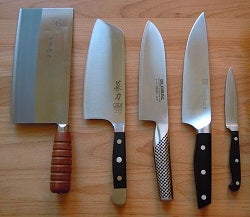
Teeth point to home
You are shopping for a gift to give to your best friend who wants to be a chef. You could choose a paring knife. Its small size makes it easy to move to peel fruits and vegetables. The crab cracker looks like a fun choice. But your friend doesn't eat much seafood. You look for something else. The choices are overwhelming. While different utensils could probably work for similar tasks, some clearly work better for certain foods. You want to get it right.
 A kitchen is filled with tools to prepare specific types of foods. Instead of a kitchen, animals have teeth that work for particular diets. Primates that eat lots of leaves are called folivores. These primates have molars with lots of ridges and crests that can pierce leafy foods. Primates that eat lots of fruits are called frugivores. Their molars are rounded and blunt, which help grind and blend fruits and nuts.
A kitchen is filled with tools to prepare specific types of foods. Instead of a kitchen, animals have teeth that work for particular diets. Primates that eat lots of leaves are called folivores. These primates have molars with lots of ridges and crests that can pierce leafy foods. Primates that eat lots of fruits are called frugivores. Their molars are rounded and blunt, which help grind and blend fruits and nuts.
Most of us eat food from grocery stores. The food found in grocery stores depends on where you live in the world. Animals also eat the foods available to them in their habitats. For example, primates that eat lots of leaves live in areas where there are lots of leafy trees. Since the shapes of teeth reflect diet, scientists can use teeth to figure out what extinct animals ate. In turn, the diet can tells us about that animal’s habitat. This is one way that scientists figure out what our distant ancestors ate and where they lived.

Fun Fact: Aye-ayes are the only primates to have continuously growing incisors! Aye-ayes use their front teeth to gouge hard fruits to eat and trees to hunt for insects.
Image by Frank Vassen
Be Part of
Ask An Anthropologist
By volunteering, or simply sending us feedback on the site. Scientists, teachers, writers, illustrators, and translators are all important to the program. If you are interested in helping with the website we have a volunteers page to get the process started.
